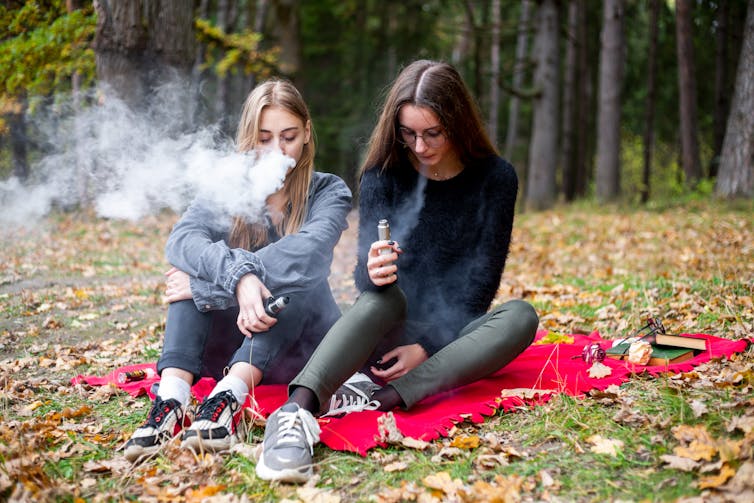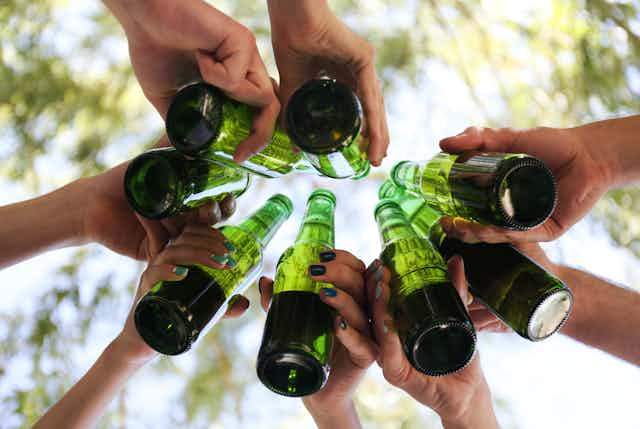Alcohol consumption among younger generations has been declining for years. And with many pubs and cocktail bars now catering to the sober and “sober curious”, it’s easier than ever to opt out.
Starting in the US in the late 1990s, and spreading to several other wealthy countries in the early 2000s, young people began to drink less than previous generations, or avoid drinking alcohol altogether.
The proportion of 16- to 24-year-olds who report drinking alcohol in the last week fell from 67% in 2002 to 37% in 2021. The decline was even steeper for younger teens. In England, the proportion of 15-year-olds who have drunk alcohol in the past week fell from 52% to 20% between 2001 and 2021, although some of this may be due to changes in the survey methods over that period.
We have been researching the decline in youth drinking in England and Australia, using both surveys and interviews with young people.
When we present our findings to other researchers and the wider public, we find that adults are often surprised to hear that young people today drink less. In our experience, their reactions suggest a belief in outdated stereotypes of young people as irresponsible and feckless.
They also sometimes jump to incorrect conclusions about the reasons why young people are drinking less, projecting adults’ motives for abstaining onto young people.
Why are young people drinking less?
The reasons behind the decline are complex, but by analysing survey data and interviewing young people in England and Australia, we can provide some answers.
The change reflects a general trend in young people’s attitudes toward risk. From smoking to sex, young people – including those in early adolescence and in their early twenties – are generally more risk averse than previous generations.
This extends to where they choose to, or feel able to, spend time. Some young people have less independent access to public spaces, like parks, than past generations because of increased restrictions on their ability to access such spaces. There is also evidence that they view socialising in such spaces with alcohol to be unsafe and morally suspect.
Recent research shows that drinking has become less routine and expected for young people, while not drinking has become more socially acceptable. This could be due to more efforts by governments and businesses like supermarkets to make alcohol less available to young people.
However, it can’t be the only explanation, as in some countries where there has been a decline in youth drinking, policies regulating young people’s access to alcohol haven’t changed.
Adolescents’ attitudes toward drinking have generally become more negative, while their attitudes toward non-drinking have become positive and accepting. Researchers argue that this stems from a longer, more protracted transition into young adulthood, as well as young people’s concerns about the future and feeling a strong sense of pressure to succeed in life, including economically.
We found most of the young people we spoke to didn’t consider peer pressure to be an important factor in their decisions to drink or not, except for a small number of university students who resented how alcohol-centric social life at university is.
Misconceptions about youth drinking
People we have spoken to about our research often assume that if young people aren’t drinking, they must be doing something else instead that is equally (or even more) harmful, such as smoking cigarettes or cannabis.
In fact, the opposite is true: smoking and cannabis use decreased at the same time as alcohol. There were some signs of increases in cannabis use among schoolchildren before the pandemic and smoking among young adults after the pandemic.
But both of these – like the rise in teen vaping – occurred years after the decline in youth drinking was well-established. In other words, some groups of young people may be smoking cannabis or tobacco and vaping more, but they are unlikely to be doing so in place of drinking alcohol.
And while the rise of the internet and social media happened at the same time as the drinking decline, there is little evidence that young people are using technology in place of drinking. On the contrary, it is those who use the internet the most who also tend to drink the most.

It is important to note that the decline in youth drinking is not the same as the growing “sobriety movement”. The latter has been behind temporary abstinence campaigns like Dry January, and helped by social media influencers, celebrities and online communities promoting sobriety as a way a of life.
Those who speak publicly about their decision to go sober usually describe how this decision was made after years of binge drinking. The sobriety movement is about adults reassessing their relationship to alcohol. This is very different from teenagers deciding, actively or passively, not to take up drinking.
Though at least one study has identified links between young people’s decisions not to drink and their health consciousness, the general trend is not about giving up alcohol, but about not really developing a drinking habit in the first place.

